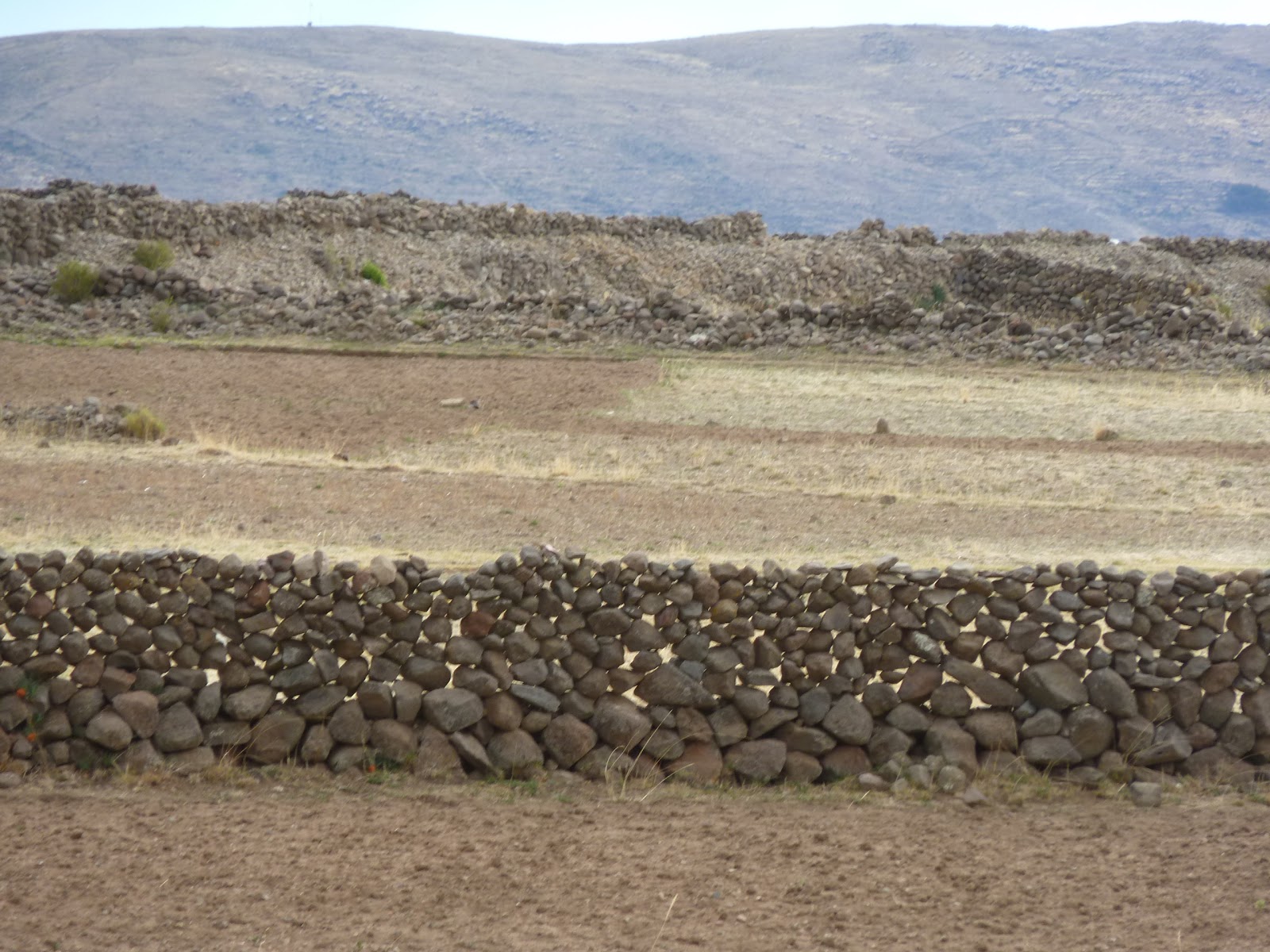We stayed with a family on the island of Amantani, a relatively
near-shore island with about 800 families (4k people), broken into 8 communities.
These 8 communities rotate overnight tourist responsibilities, with each taking on
about 8 weeks of tourists a year. Of our community's 102 families, 25
participate in the tourist opportunity, in which they house
and feed and have responsibility for up to 4 tourists for an 18 hour
period (lunch through the next day's breakfast) for 30 soles (about $12)
per person, paid directly to the family. Our family was delightful, rendered especially so through
the exceptional linguistic abilities of a third person in our group, a
cardiologist from Slovenia, who generously translated and shared with us.
 |
| The family keeps sheep and chickens (quiet chickens!), right next to the house. A donkey lives next door. |
 |
| The chickens had access to a shelter that adjoins the house. Nicely worn broom. Wooden chopping block. |
 |
| The view from their house. There was a small outhouse back here, too, with a non-flushing toilet (no seat, standard in this part of the world). Families taking part in tourism are required to have an outhouse for tourist use; our family's was dedicated to guest use only, but they had a family one, too. |
 |
| Our lunch included three of the 3K varieties of Peruvian potatoes: round white potatoes, cucumber and tomato slices, fried cheese, two varieties of fingerlike potatoes. Good food. |
 |
| Our room, bright and cheery in the daylight. Four times the size of the dining room. Clearly tourist fare. One light in the room, solar-powered. |
 |
| Emiliana, the 34-year old mom, in her kitchen, cooking breakfast. |
 |
| The rest of the family, dad Roberto in back, then Nelson (10), Elizabeth (12), Kelly (9). They leave the island once a year to go to Puno to get necessities. |
 |
| The lacy stone fence on a walk up to the top of the island. |
 |
| The knitting style on this island included tension provided by yarn around the neck. |
 |
| A lovely hummingbird attracting flower, called the cantota. Locals knit yarn versions of these flowers, for good luck. |
 |
| Looking over agricultural terraces to Taquile island, the next day's stop. |
After dinner we were outfitted for a community dance. Steve in hat and poncho, me in a wool skirt, fancy shirt, cummerbund, and a fancy embroidered shawl that is the island's traditional ladies' hat (all communities have an identifying hat). Somehow the ladies could keep this shawl on their heads, when they walked, jogged, even when they danced - another special talent I don't have. The dancing was mostly stomping and moving in a circle.

 |
| Steve dancing with Roberto and Emiliana (notice the scarf still resting perfectly on her head while she energetically dances). |
The next morning we got on our boat and went to the island of Taquile, a fascinating place that houses 15 cows, one donkey, and 2,000 humans, no motorized transportation. We saw no one in other than traditional dress here (except tourists). We heard lots about their culture, which is very unusual, including the arrival of children prior to (and required for) marriage, the men knit special things including their hats and the women weave; their clothing indicates their married status, and much more.
 |
| Village elders (black hats). Anything other than the white shirt, black vest and pants, fancy belt mark and hat mark one as a tourist here. |
 |
| Unmarried ladies wear big pompons. |
 |
| Married men wear red hats and wear the side purse, a gift from their wives, in which they traditionally carry coca leaves. |
 |
| A plow being carried from one terrace to another, by a married man (red hat). |
 |
| Unmarried lady (big pompons), with baby. |
 |
| We left the island, by descending 535 steps, and passed a family of folks working their field. |
|
|
  |
| After navigating the big, big lake, a small channel through the totora reeds leads back to Puno. |






















No comments:
Post a Comment